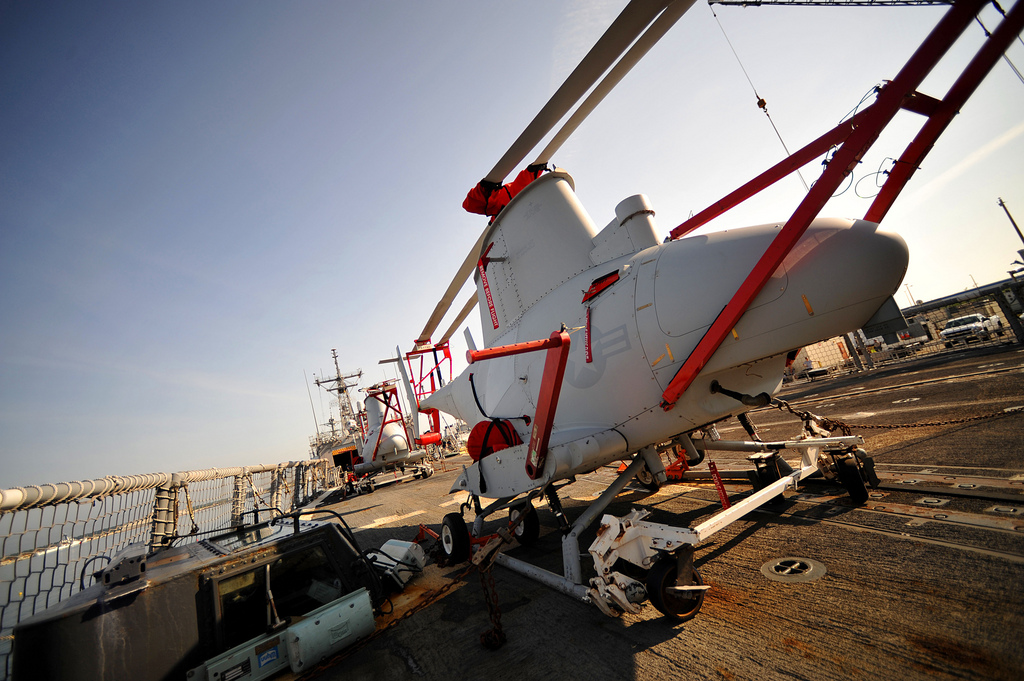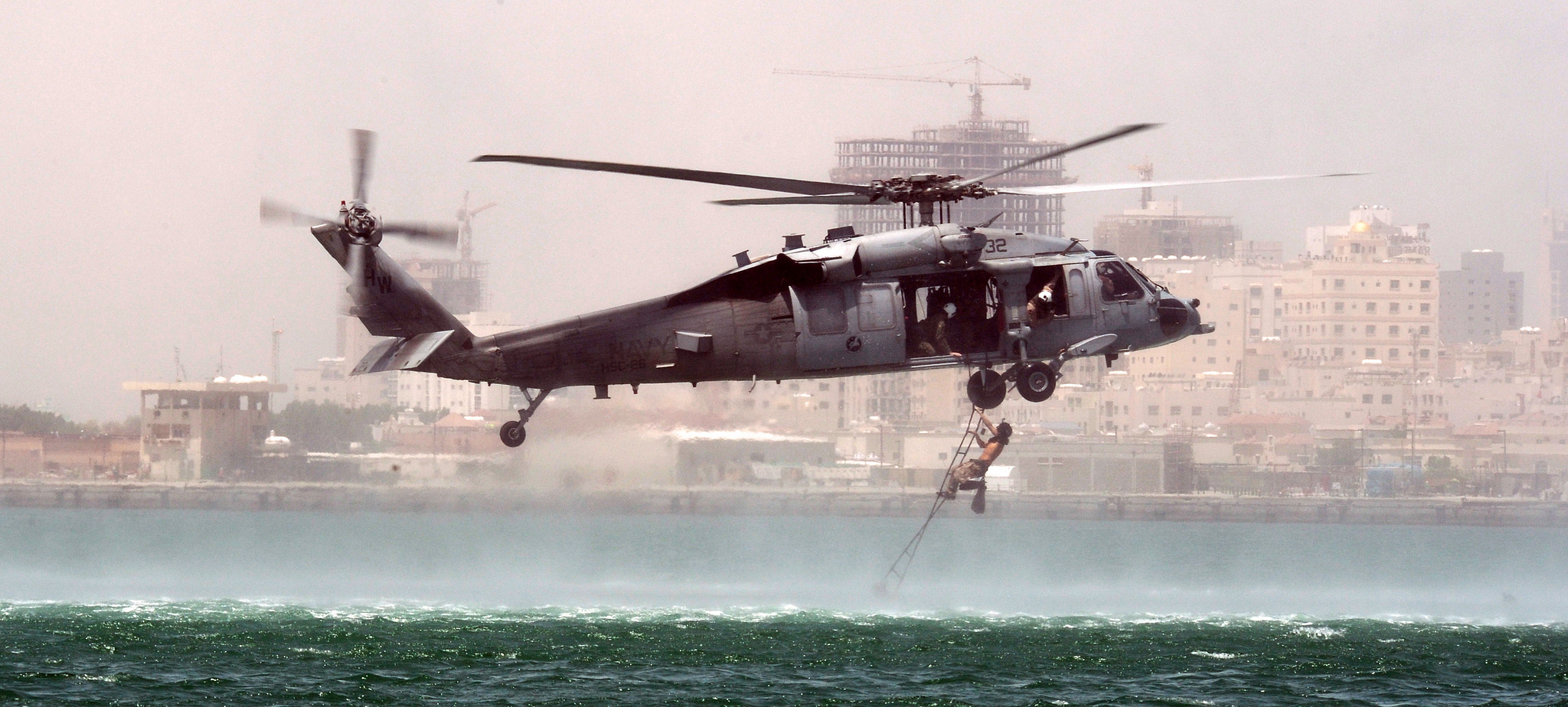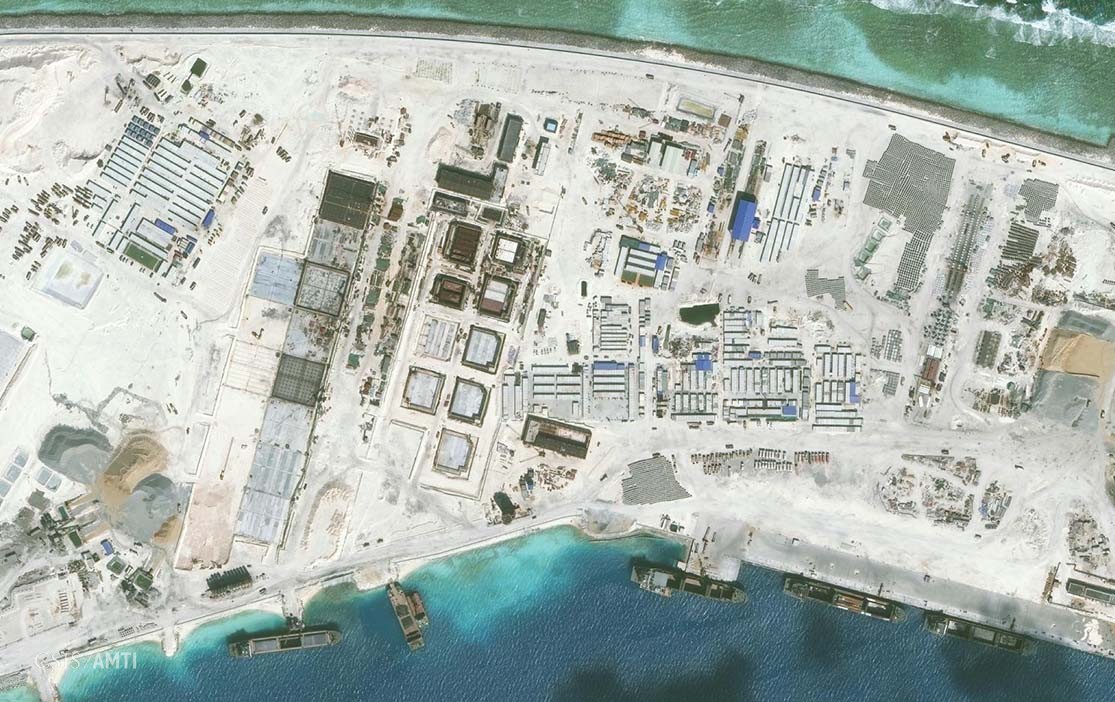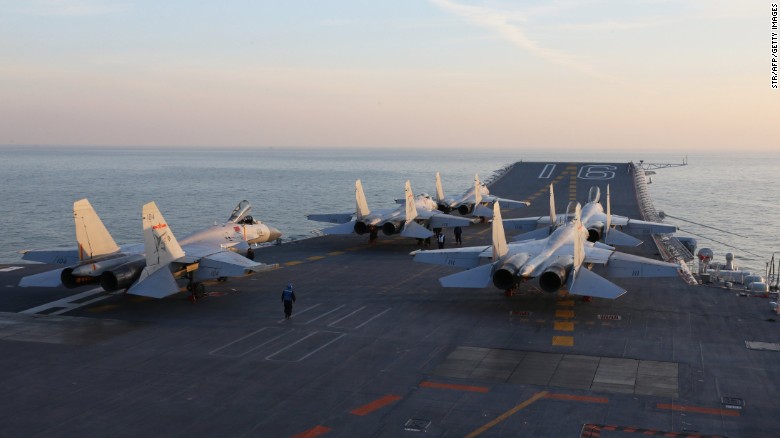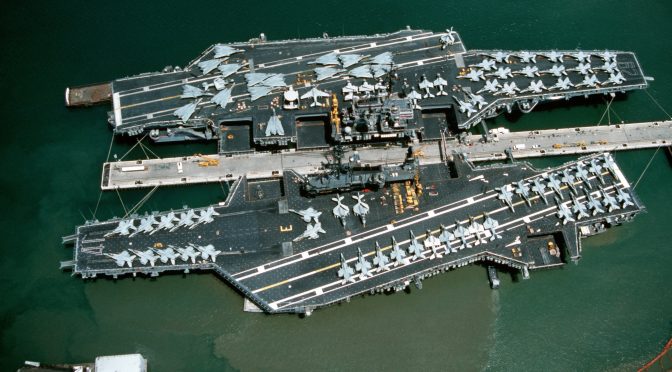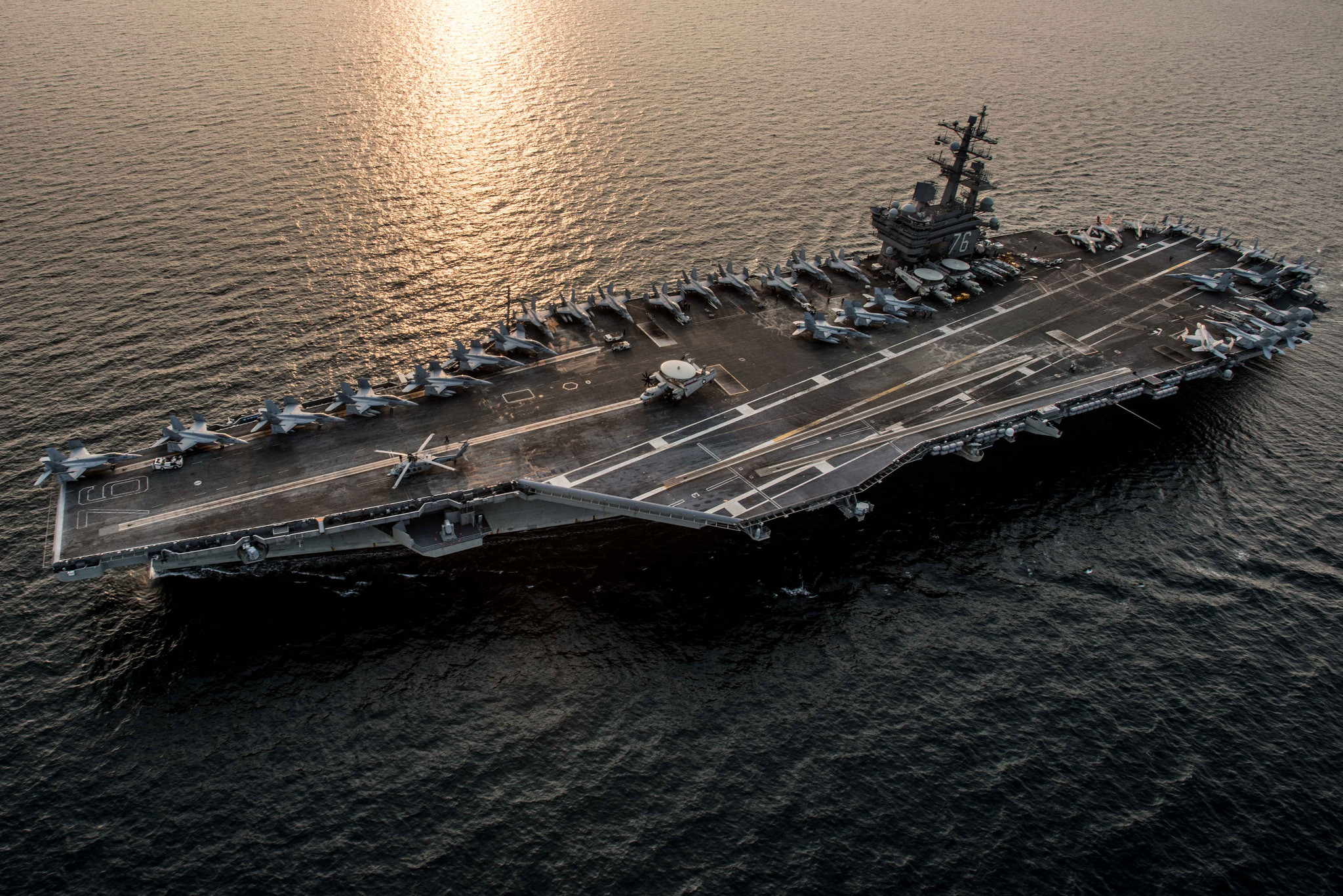By Sally DeBoer
The changing Arctic is a topic of increasing interest to the maritime security community. Rapidly receding sea ice and increasingly navigable waters combined with the promise of rich natural resource deposits have made investment in the Arctic – particularly military and infrastructure investment – a priority for Arctic nations and other parties that stand to benefit from the region. To discuss these issues and more, CIMSEC interviewed Commander Sean Fahey, USCG of the U.S. Naval War College Stockton Center for the Study of International Law for his expert insight on legal and security issues in the High North in the 21st Century.
SD: CDR Fahey, thank you so much for taking the time to discuss legal and security challenges to the Arctic in the 21st Century. We are honored to have someone with your experience and expertise speak with us! To begin, can you tell us a little about yourself and your background?
SF: Great to be with you; thank you for the invitation. I serve as the Associate Director for the Law of Maritime Operations at the Stockton Center for the Study of International Law, at the U.S. Naval War College. In this role, I conduct research and teach global maritime security law. In particular, I focus on the intersection of law and security in the Arctic Ocean. For example, I recently collaborated with Professor James Kraska on a position paper for the U.K. House of Commons Defence Sub-Committee, Defence in the Arctic Inquiry. I am also the Editor-in-Chief of International Law Studies, the Stockton Center’s peer-reviewed law journal, and the oldest journal of international law published in the United States.
By way of background, I am an attorney and commissioned officer in the rank of commander in the United States Coast Guard, and have advised various levels of command on the legal issues impacting maritime security operations, primarily counter-drug, fisheries enforcement, migrant interdiction and environmental law enforcement. I have also served as a Trial Attorney for the U.S. Department of Justice and as a legal advisor in the operational law division of USAFRICOM, where my focus was on maritime security operations, namely counter-piracy and maritime law enforcement support, and counter-terrorism.
SD: Can you characterize the United States’ current position in the Arctic? Is the U.S. prepared – materially and strategically – for challenges ahead in the Arctic?
SF: The United States is an Arctic nation, and the region is of significant strategic, economic and environmental importance to us. Some of the challenges we face in the region, for example, energy and mineral exploitation, are future challenges, but many, such as preserving freedom of navigation and overflight, are immediate. Climate change – whatever the cause – promises to be a major factor in how we prioritize our responses to those challenges, but it is not the only factor. Our strategy is influenced by the actions and priorities of the other Arctic nations as well, and in some areas the United States is not in the lead.
Strategically, we have comprehensive guidance on how to structure our approach to the region. American priorities are set forth in National Security Presidential Directive-66/Homeland Security Directive-25 and the “National Strategy for the Arctic Region,” and the accompanying Implementation Plan. Broadly, U.S. strategy is to advance U.S. security interests, pursue responsible Arctic stewardship, and strengthen international cooperation in the region. Each of those priorities has several detailed lines of effort. For example, the U.S. has four primary lines of effort to promote security: (1) preservation of freedom of navigation and overflight throughout the Arctic region; (2) enhancement of Arctic regional domain awareness and presence; (3) development of future U.S. energy security; and (4) evolve Arctic strategic capabilities, military force structure, and civilian infrastructure to be able to best respond to challenges unique to the region.
Many of the federal departments and agencies tasked with taking the lead on a particular line of effort within the national policy further refine the National strategy with additional guidance documents, among them the U.S. Coast Guard and Department of Defense. So, in response to the second part of your question – is the United States prepared for future challenges in the Arctic? Strategically we are. We know the priorities and we know who is responsible for advancing them. Materially, however, the United States is not in the best position it could be to advance its strategic priorities. The most pressing example of this lacuna is the requirement for icebreakers.
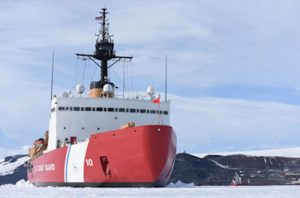
Enhanced icebreaking capabilities are vital to properly support U.S. security interests in the Arctic. You cannot be present if you cannot get there. Virtual presence is actual absence. A persistent presence in the Arctic region is a condition precedent for the effective exercise of law enforcement jurisdiction and improved domain awareness. Currently, the U.S. has two icebreakers. The Russian Federation has 37. A fleet of at least six heavy icebreakers would provide one full-time U.S. presence within the Arctic Ocean in both the east and west, while also allowing enough hulls for training, work-ups, and post-deployment maintenance. This requirement is supported by the Pentagon, and is the single most important capability for the U.S. to pursue in the Arctic. Only a robust ice-breaking capability allows the U.S. to respond to all threats and all hazards in the region.
SD: The United States is in a time of flux, politically – how do you think a U.S. position that is perhaps less invested in preventing the effects of climate change might affect the security situation in the Arctic and the role of the U.S. as an Arctic leader?
We certainly are in a time of flux, but it is too early to say how the administration will address the challenges posed by climate change. Time will tell. That said, the data on the environmental changes occurring in the Arctic are alarming. According to the National Snow and Ice Data Center, which is directly supported by NASA and NOAA, the minimum Arctic sea ice extent has reduced by 40 percent since 1978. Last year the maximum (wintertime) sea ice extent was at a record low for a second year in a row. Additionally, NASA reports that global surface temperatures – to include in the Arctic – were at record highs in 2016. In short, the data indicate that the melt will not only continue, but will likely accelerate.

Responsible regional stewardship – over the Arctic and its resources – is one of the pillars of our national strategy. It would be unfortunate if the United States were forced to effectively abdicate its leadership position in the Arctic due to a perceived lack of credibility on this issue by other Arctic nations. If we abdicate our leadership position, we abdicate our ability to shape regional security issues, and other Arctic nations may be reluctant to partner with us.
SD: Can you speak to some of the impacts that climate change has had on the Arctic security situation?
SF: The changing Arctic climate has already had a recognizable impact on the regional security landscape. Less ice means greater access and more activity. Some of the impacts may be positive. For example, the Arctic has enormous importance for long-term U.S. energy security. The U.S. Geological Survey (USGS) estimates that 13 percent of the world’s undiscovered oil reserves (90 billion barrels) are in the Arctic. This estimate is in addition to more than 240 billion barrels of petroleum reserves that have already been discovered. The USGS estimates that one-third of this oil is in the circum-Arctic region of Alaska and the Alaskan Outer Continental Shelf (OCS). Responsibly and safely developing new domestic energy sources strengthens U.S. energy security by reducing U.S. reliance on imported oil, some of which, as you know, travels vast distances from extremely unstable regions before entering the national supply.
That said, competition for energy resources in disputed areas of the Arctic could destabilize the regional security balance. I am confident however, that the United States and the other Arctic nations will resolve their boundary disputes peacefully. We have seen evidence of this already with the Russian Federation and Norway resolving a long-standing maritime border dispute in the Barents Sea.
The more immediate impact of climate change on the Arctic security situation will be on freedom of navigation and overflight in the region. Broadly speaking, freedom of navigation and overflight are critical for the U.S. to be able to support peacetime and wartime contingencies across the globe. If the Arctic ice melt continues at its current pace, the Northwest Passage, the shipping route along the Canadian Arctic coastline, and the Northern Sea Route, the shipping route along the Russian Arctic coastline, will be accessible for longer periods of time, possibly year round.
Strategic mobility throughout the Arctic could become critical to support strategic sealift for U.S. contingency operations worldwide, and the Northwest Passage and Northern Sea Route could serve as waterways to support such contingency operations. Portions of both shipping routes cross areas where the respective coastal state has made, in the opinion of the U.S., an excessive maritime claim, and these claims threaten the ability of naval forces to exercise their navigational and overflight rights. Preserving these rights is a central tenet of the National Arctic strategy. The U.S. Department of State, the lead agency for this strategic priority, is actively engaged with Canada and Russia on this issue, but it may be prudent for the United States to conduct freedom of navigation operations – the peaceful exercise of international legal rights in disputed sea areas – in areas of the Arctic Ocean that are subject to unlawful maritime claims.
SD: Many of our readers may not be aware of the pivotal role the U.S. and international Coast Guards have in maritime operations, specifically on operations in the high north. What improvements could the United States make to its infrastructure to be more prepared for operations in the Arctic?
At the risk of sounding redundant, I think greater icebreaking capability, and the shore-based infrastructure required to support icebreakers, is absolutely critical for the U.S. to achieve its maritime security goals in the Arctic. In order to respond to regional threats and hazards, U.S. surface forces need to be able to safely navigate the Arctic Ocean.
In the same vein, the U.S. should also commit to constructing ice-strengthened patrol ships for its seas services, similar to the Arctic Offshore Patrol ships being commissioned by the Royal Canadian Navy. The increased security presence in the region that greater icebreaking capability and ice-strengthened patrol ships would enable will help further deter conventional and unconventional maritime security threats and also ensure that U.S. near-shore and offshore oil and gas industry infrastructure is properly safeguarded. Search and rescue (SAR) also requires both ships and aircraft that are capable of operating in extreme climate. The United States has inadequate force structure to meet SAR contingencies.
Additionally, the U.S. needs to strengthen is pollution response capabilities and infrastructure in the Arctic. Needless to say, as the energy sector expands in the Arctic, so too does the risk of pollution. Given the remoteness of the region, sufficient pollution response capabilities and infrastructure need to be in place and accessible in order to ensure a timely response.
Finally, as the region becomes more accessible to year-round commercial navigation, the U.S. needs to ensure we have the sufficient infrastructure to support safe and secure maritime commerce. This could include harbor and dock improvements, aids to navigation, management systems for high risk vessel traffic areas, search and rescue capabilities, and effective communications networks. Some of these are in place, some just need to be enhanced, and some need to be created.
SD: As you are a legal scholar, we’d like your insight on competing maritime claims in the region. First, what legal foundation, if any, does Canada have for its claim over the Northwest Passage? We know this is a controversial topic; what does the letter of the law dictate on the matter?
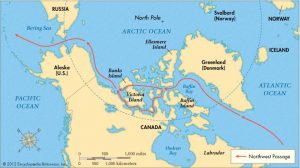
Canada asserts they have complete sovereignty over the waterways that comprise the Northwest Passage. Their legal argument for doing so is that the waters comprising the Northwest Passage lie within either Canadian internal waters or its territorial sea, and are thus subject to their jurisdiction and control. The United States and the European Commission have rejected Canada’s claims, and consider the Northwest Passage, a strait used for international navigation, open to navigation without coastal state interference.
Canada’s internal waters claim is predicated on straight baselines and the assertion of historic title to the waters of the Northwest Passage. Though the normal baseline used to measure the extent of a nation’s territorial sea is the low-water mark along their coast, UNCLOS does permit nations to draw “straight baselines” if certain criteria are met. Once a legal baseline has been drawn, waters seaward of the baseline, up to twelve nautical miles, are considered territorial sea; waters landward of the baseline are considered internal waters, subject to absolute coastal state sovereignty and jurisdiction. In short, Canada claims that, through its application of straight baselines, the entire waterway of the Northwest Passage became part of its territorial sea or internal waters, and is subject to its exclusive control. Remember though, that the Northwest Passage is some 100 nm wide in many areas, and Canada may not claim these areas as internal waters or territorial sea.
The U.S. position is that Canada’s application of straight baselines along the Northwest Passage is excessive and constitutes an unlawful interpretation of the criteria for establishing straight baselines under UNCLOS. Straight baselines may be used in the case of fringing islands or a coastline that is deeply indented and cut into. But even in these cases, the coastal state must draw the baselines narrowly. Under Article 8(2) of UNCLOS, even if countries accepted the limits of coastal state jurisdiction, then vessels from any nation would be completely free to traverse the area in innocent passage.
Consequently, even if nations accepted Canada’s straight baseline claims on their face, the ships of all nations would still be entitled to “innocent passage” through these “internal waters.” UNCLOS is clear on this issue; when the application of straight baselines have the effect of enclosing as internal waters areas which had not previously been considered as such – as is the case in with the Northwest Passage – the right of innocent passage still exists. Canada asserts that – the UNCLOS provisions about straight baseline enclosures notwithstanding – they have a historic claim to the Northwest Passage as well, one that precedes its straight baseline application. One of the weaknesses with that argument, however, is that a claim of historic title to internal waters requires, among other things, the acquiescence of foreign nations to that claim. The United States have never acquiesced to Canada’s claim, but have, instead, openly protested it, and continue to do so.
As you indicate though, it is a controversial matter, and much stronger legal scholars than I have written at length on the issue, but I think the position of the United States and European Commission is the legally correct one; the Northwest Passage is an international strait. Various legal characterizations aside, I am confident that the dispute over the Northwest Passage will be resolved amicably. Canada is a longstanding and indispensable ally of the United States – one that we have the deepest respect for – and an invaluable partner in the Arctic. The U.S. shares the same interests as the Canadians in ensuring a safe, secure, and environmentally protected Arctic, and many of the systems employed and contemplated by Canada to protect its interests – ship reporting, designating sea lines, vessel traffic separation schemes – do not require absolute sovereignty to affect. A diplomatic solution will be found.
SD: Can you provide some context for Russia’s extensive maritime claims? Can they reasonably expect a favorable ruling on their extension of their continental shelf?
The Russian Federation has several maritime claims of interest, particularly their claims regarding the Northern Sea Route and, as you note, their claim to an extended continental shelf. The Northern Sea Route claims need to be looked at closely from a maritime security perspective, as they have the potential to adversely impact maritime mobility.
As you know, the Russian Federation enacted national legislation establishing a state institution (the Northern Sea Route Administration or “NSRA”) with a mandate to “organize navigation in the water area of the Northern Sea Route.” This national legislation also defined “the water area” of the Northern Sea Route to include the Russian Arctic internal waters, territorial sea, contiguous zone, and – notably – their exclusive economic zone. Shortly after its establishment, the NSRA published their “Rules of Navigation on the Water Area of the Northern Sea Route,” which contains several provisions that adversely impact freedom of navigation and may not be consistent with international law, chief among them the unilateral requirement that all ships must request advance permission from the NSRA to enter “the water area” of the Northern Sea Route.
The potential impacts of this provision alone to maritime mobility could be significant; the regulation is arguably an attempt to unilaterally bypass vital high seas freedoms and navigational rights, such as innocent passage and transit passage that ships would otherwise be entitled to, in order to assert greater control over the shipping channel. Though UNCLOS (Article 234) provides for limited legislative and enforcement rights in “ice covered areas” of a coastal state’s EEZ, any coastal state legislation adopted under this limited authority must have “due regard to navigation.” As such, the Russian Federation’s reliance on Article 234 as the international legal basis for its regulation requiring ships to request permission to enter the water areas of the Northern Sea Route is overreaching. The impacts to navigation of this provision are severe.

With respect to whether the Russian Federation can expect a favorable ruling from the UN Commission on the Limits of the Continental Shelf on their extended continental shelf claim, I would say that the Russians are certainly doing everything in their power to see that they do. And if they do not receive a favorable ruling, I fully expect them to continue conducting research into the Arctic seabed, compiling data, and submitting revised claims, much like they did in 2015 after their 2001 application was rejected and the Commission requested additional scientific evidence from the Russians to support their claim. The natural resources potentially at stake are too valuable for Russia to simply walk away.
SD: The PRC’s response to the arbitration ruling on claims in the SCS indicated a disregard for international law – can you see such a reaction leading to similar reactions when it comes to Arctic rulings?
There’s always the potential for it and, in fact, already some evidence of it. In 2013, the Russian Federation refused to directly participate in the International Tribunal for the Law of the Sea proceedings in the Arctic Sunrise case, the dispute between Russia and the Netherlands over law enforcement actions taken by Russia in their Exclusive Economic Zone against a Netherlands-flagged Greenpeace vessel protesting against Russian oil exploration in Arctic waters. To be fair, the Russian Federation did, however, submit several position papers to the arbitral tribunal about various aspects of the case, to include protesting the jurisdiction of the tribunal, but ultimately Russia rejected the tribunal’s ruling.
More generally though, any given nation’s strategic priorities may not always be in perfect alignment with what international law requires. Ideally though, in such a situation, nations will recognize that short-term national “gains” may ultimately compromise their standing within the international community, and erode their ability to partner with other nations. My concern is that as energy resources become less plentiful in other regions and more accessible in the Arctic, particularly in the disputed areas, we may see some nations more inclined to act solely in their own national self-interest, even if their actions are in direct conflict with international law.
To date, however, many of the challenges facing the Arctic have been addressed collectively. There appears to be a genuine spirit of international cooperation in the region. We’ve seen this in the Ottawa Declaration establishing the Arctic Council as a forum for intergovernmental cooperation in the region, the commitment to the Law of the Sea as the legal framework to govern the Arctic Ocean made by the Arctic coastal states in the Ilulissat Declaration, the participation of the Arctic coastal states in the formation of the International Maritime Organization’s Polar Code, and the successful development of a binding multilateral search and rescue agreement between all of the Arctic nations, governing the entire region. There are many examples of international collaboration in the Arctic, and I am cautiously optimistic that nations will respect collective interests – such as adherence to international law – even when there may be some short-term national advantage to be gained by disregarding them. The Arctic is not a region where you can “go it alone.”
SD: Let’s discuss militarization in the Arctic – do you foresee a trend toward greater military presence in the Arctic and what possible implications of this movement might you caution?
I do, and it is a trend that cannot be solely attributed to any one nation. Many of the Arctic countries are increasing their military footprints in the region, which of course has a ripple effect. As you know, the Russian Federation recently stood up a Joint Strategic Command for the Arctic. The entirety of Russia’s Northern Fleet was completely absorbed into this new Arctic Command, and the land component is comprised of two brigades, with plans for a third, as well as specially trained Arctic coastal defense divisions. Fourteen airfields and sixteen deepwater ports are in various stages of development along the Northern Sea Route. Russian submarine patrols across the North Atlantic rose by nearly 50 percent last year. These capabilities and this infrastructure positions Russia to have a dominant military presence in the Arctic for the foreseeable future.
Despite this escalation, however, I think the potential for a large-scale, conventional conflict in the region is low. Perhaps that’s naïve, but there is little evidence that the Arctic nations will abandon diplomacy as the preferred dispute resolution tool in favor of force. In fact, the evidence points to the contrary. I think what is more likely is another “Black Sea Bumping Incident” type scenario between an Arctic coastal state, defending what they believe their territorial integrity, and a foreign naval vessel, exercising freedom of navigation, perhaps along the Northern Sea Route. Of course, this kind of scenario can – in and of itself – lead to an escalation.
SD: How would you answer those who feel UNCLOS is insufficient when considering legal issues in the High North?
I agree with the wisdom of the signatories to the Illulissat Declaration. The Arctic is primarily a maritime region, and the Law of the Sea is the appropriate international legal regime. Many of the future challenges in the Arctic – delineating the outer limits of the continental shelf, which will hopefully resolve many of the potential resource disputes in the region; ensuring freedom of navigation along shipping routes that may become increasingly more accessible with the changing climate; ensuring comprehensive, but fair, environmental stewardship – are challenges that the Law of the Sea already addresses. Bilateral and multilateral treaties on specific issues – for example, the Arctic Search and Rescue Treaty – can help fill most of the gaps not directly addressed by the Law of the Sea. In terms of a governing body of law, however, the Law of the Sea, to include UNCLOS, is more than sufficient.
Commander Sean Fahey, United States Coast Guard, is currently assigned as the Associate Director for the Law of Maritime Operations at the Stockton Center for the Study of International Law at the U.S Naval War College in Newport, Rhode Island. He is also the Editor-in-Chief of International Law Studies. He can be reached at Sean.Fahey@usnwc.edu.
The views and opinions expressed here are presented in a personal and unofficial capacity. They are not to be construed as official policy or reflecting the views of the United States Coast Guard or any other U.S. government agency.
Sally DeBoer is currently serving as the President of CIMSEC for 2016-2017. She can be reached at president@cimsec.org.
Featured Image: Russian nuclear icebreaker NS 50 Let Pobedy (Sputnik/Vladimir Astapkovich)





